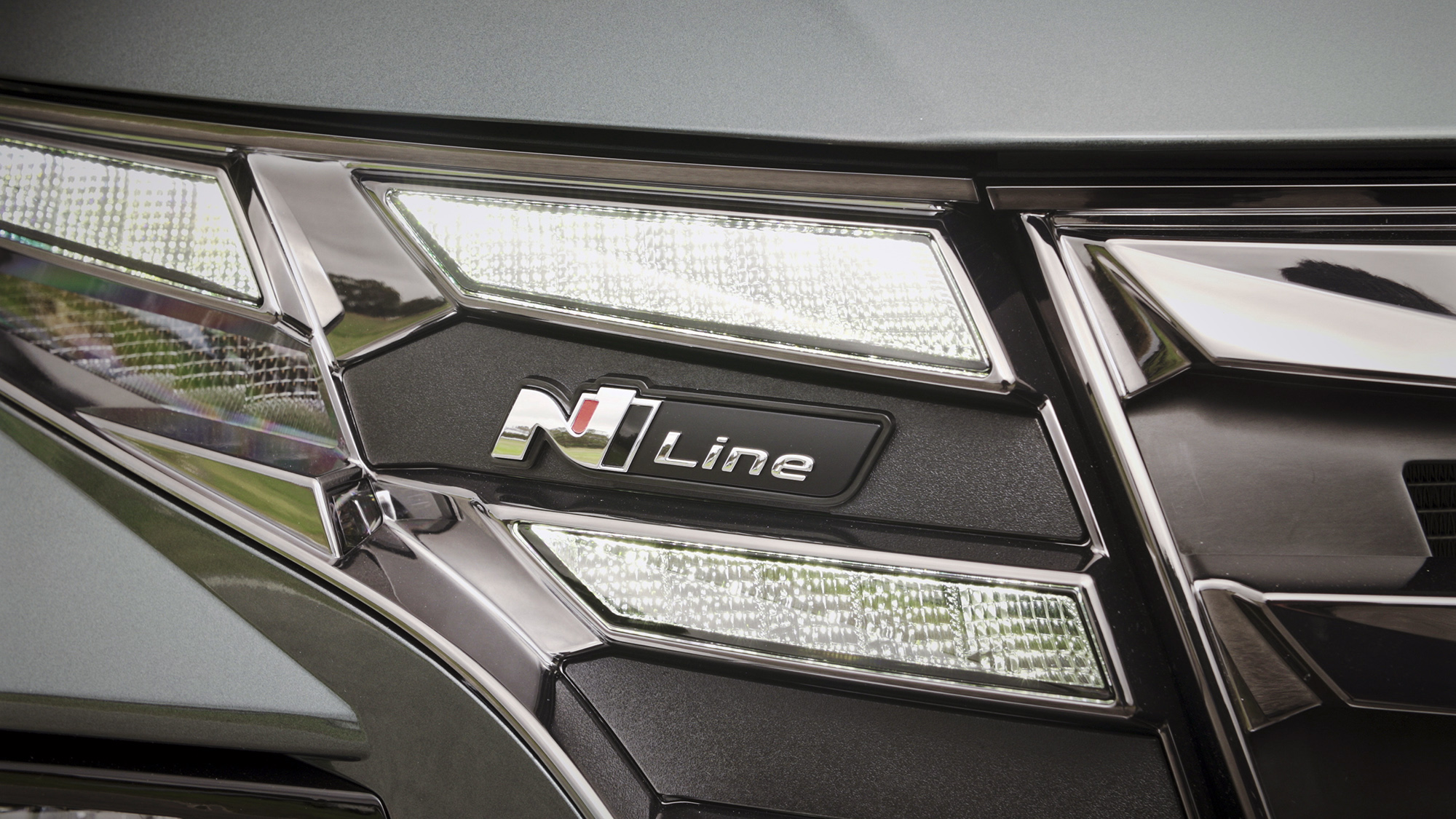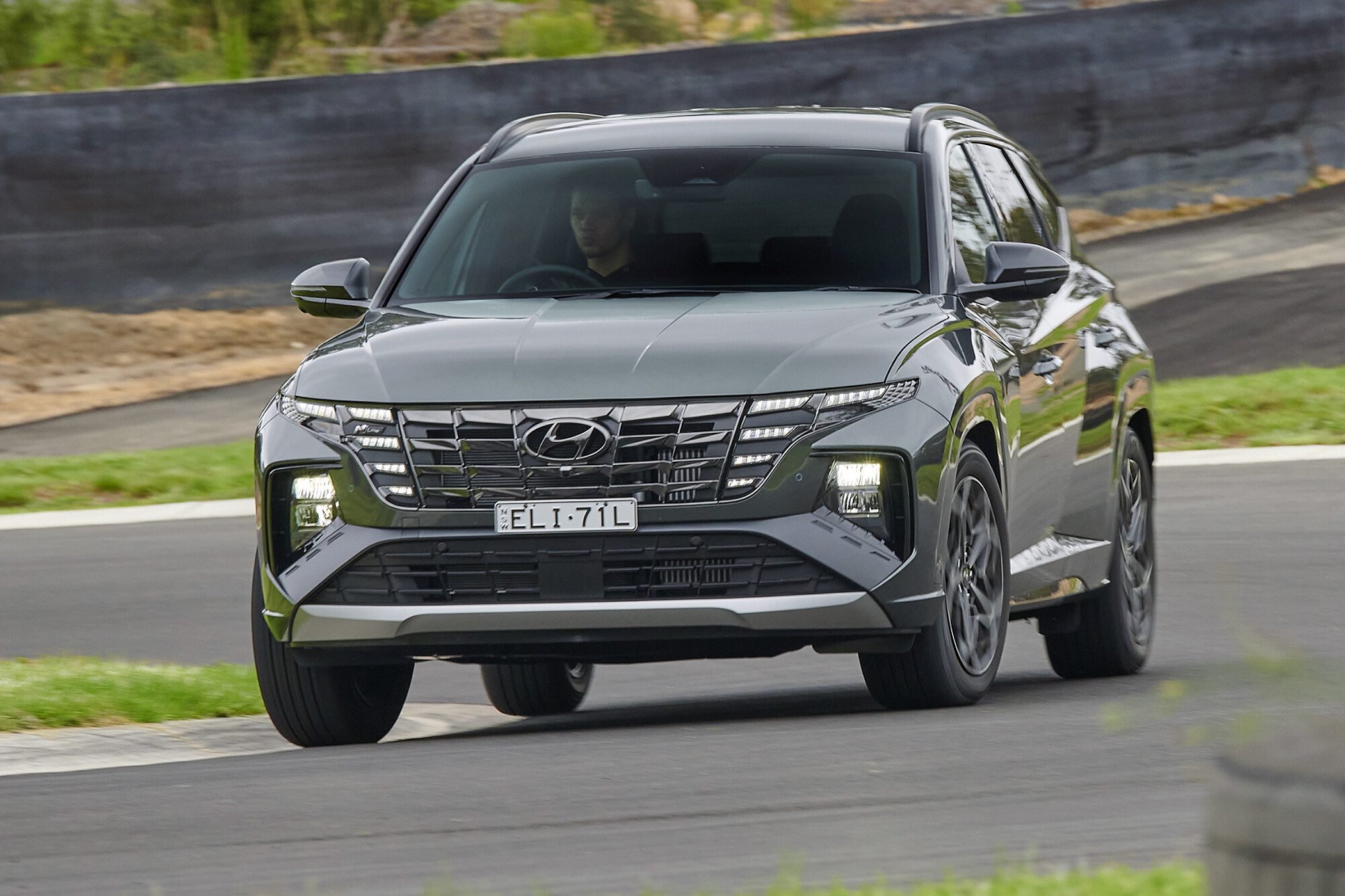
Hyundai’s transition into more premium and performance-focused markets is a multi-faceted strategy, powered in part by the freshly forged N halo brand.
While calorie-packed models such as the i30 N deliver the main performance hammer blows, its new N Line sub-brand is also hard at work.
Positioned below the i30 N, Veloster N (in the US) and forthcoming Kona N, products under the N Line offers a taste of the more aspirational vehicles bundled into more affordable packages.
In the shadow of the growing line-up of full-fat N Models – which must adhere to a strict mantra of dynamics and high-performance – the N Line offers a more flexible interpretation of sportiness.
That’s why you can expect to see more models in the Hyundai family rolling out wearing the N Line identity even if a weapons-grade N version isn’t necessarily destined for the line-up.
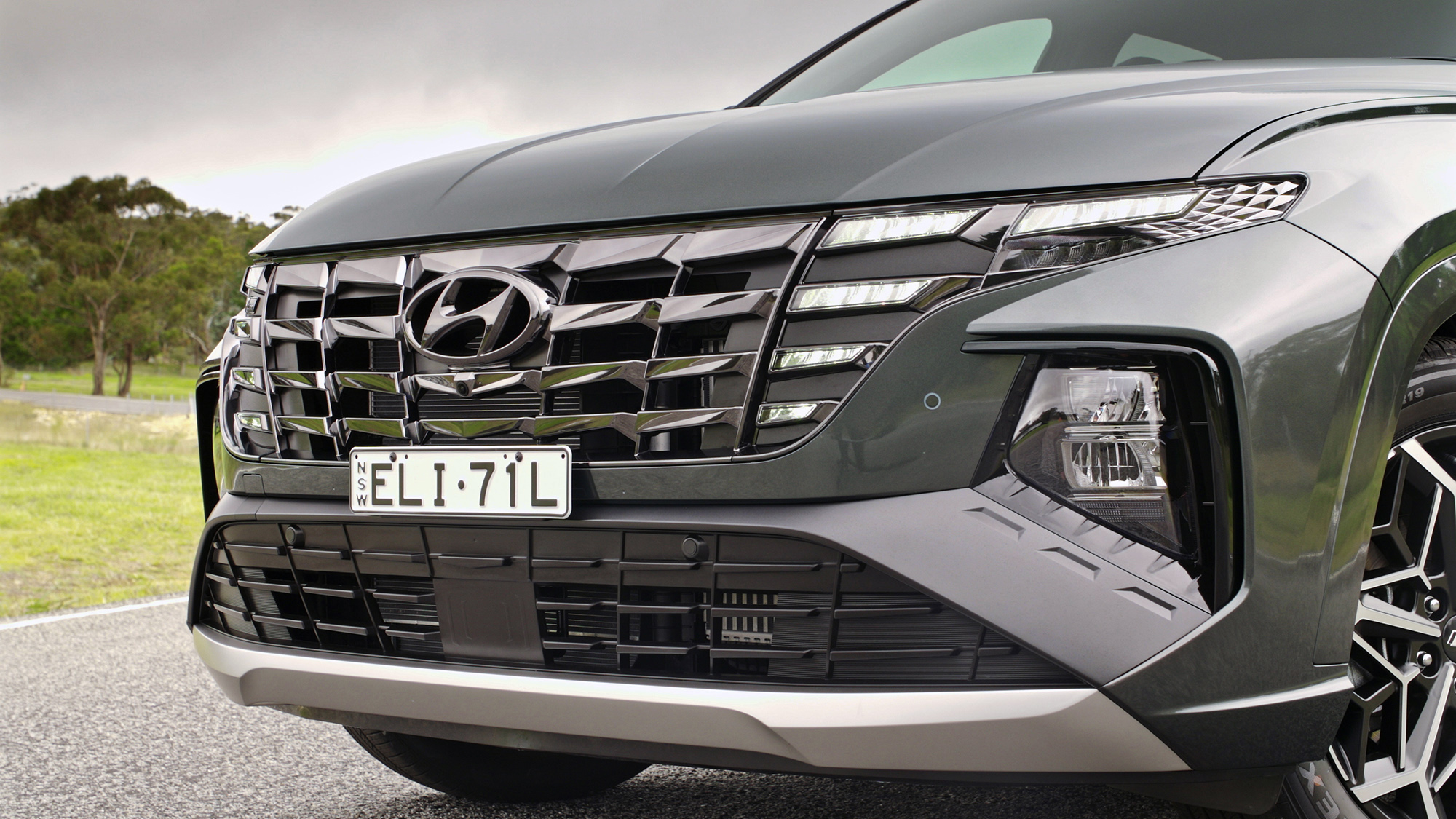
Until now, Hyundai’s N Line variants have offered a level of performance that bridges the gap between the more pedestrian options and the full-blown N flagship, including the i30 N Line and Kona N Line, but its all-new 2021 Tucson applies the N Line moniker differently.
Arriving with the second-generation (or fourth if you count the two generations of ix35 before it) mid-sized SUV in April 2021 will be an option to upgrade the three core variants with an N Line package, instead of a standalone variant as it is in other model ranges.
The new Tucson line-up will consist of a 2.0-litre naturally-aspirated petrol engine with front-wheel drive, and a pair of all-wheel drive variants powered by a 1.6-litre turbo petrol or 2.0-litre turbo diesel, available in three different levels of specification.
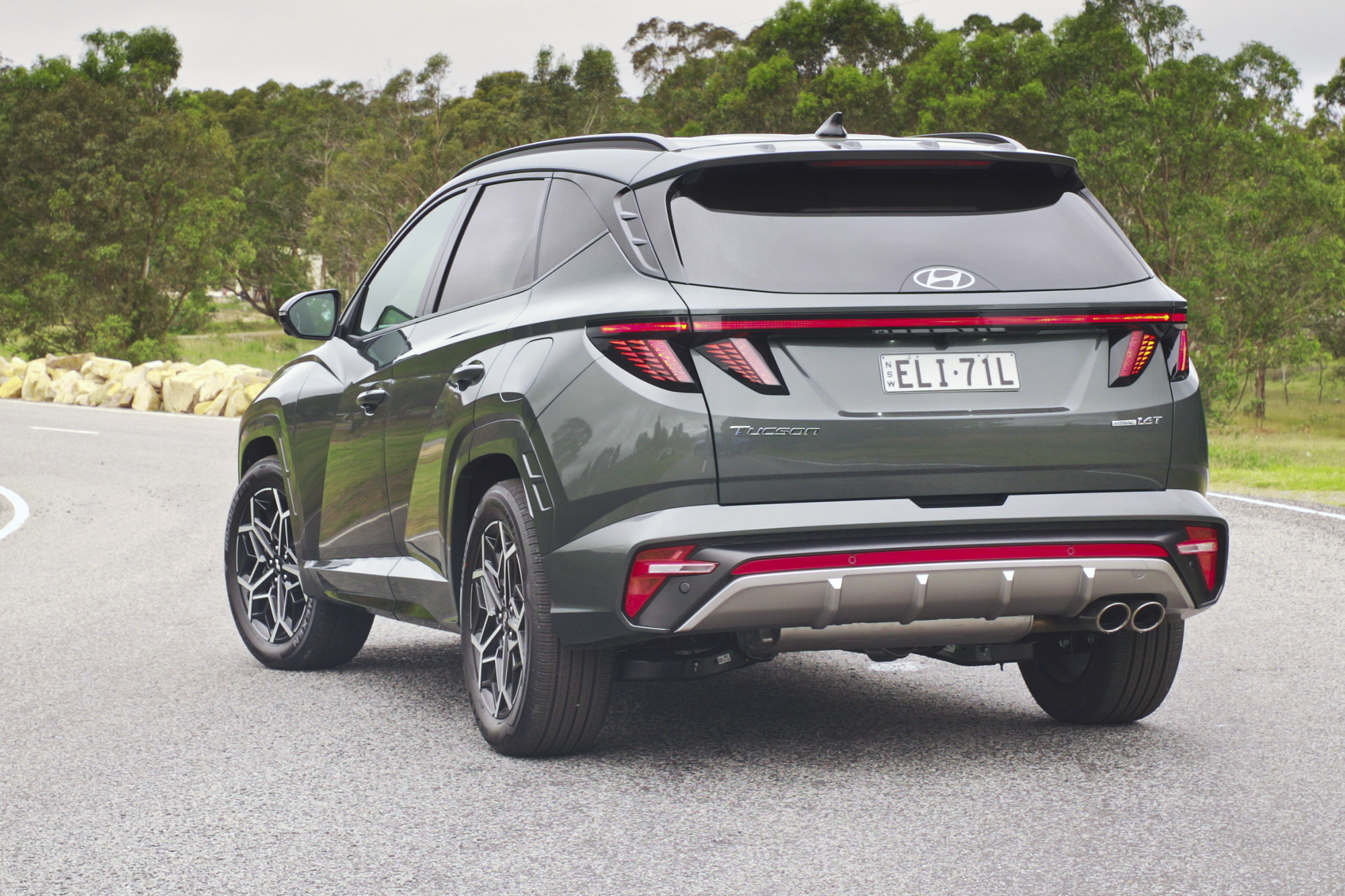
Range pricing is yet to be confirmed, as is the cost to upgrade to the N Line package, but all versions will be available with the sportier enhancements.
However, unlike the previous N Line variants, the optioned-up Tucson will gain no performance advantage with the addition of the package.
Instead, a range of aesthetic enhancements will bring a flavour of the N pedigree in looks alone.
Does it work? Well Hyundai Australia got its hands on a pre-production version of the Tucson for us to get an early sample and find out what to expect from the new ‘N-look’ Tucson, ahead of its arrival – along with the rest of the range – in April 2021.

All versions of the 2021 Tucson get a sharp new exterior design including a bold new grille, eye-catching fragmented headlight and daytime running lights, and a fang-like rear light design for an equally good-looking tail.
The N Line builds on those sharp touches, enhancing the overall presence. The grille gets a smart smoked chrome-effect recoat along with a more blocky mesh pattern, while the foglights are framed by a more angular trim, and a titanium-coloured front lower splitter kicks off a host of more racy looking touches.
The profile is dominated by unique 19-inch alloy wheels that have a fine, complex design that appears only possible with 3D printing, and the large hoops are hemmed by a body-coloured wheel-arch trim – not plain plastic like the rest of the range – for a less rugged, more refined and sporting look.
Fatter side-skirts are also unique to the N Line and continue the angular design theme.
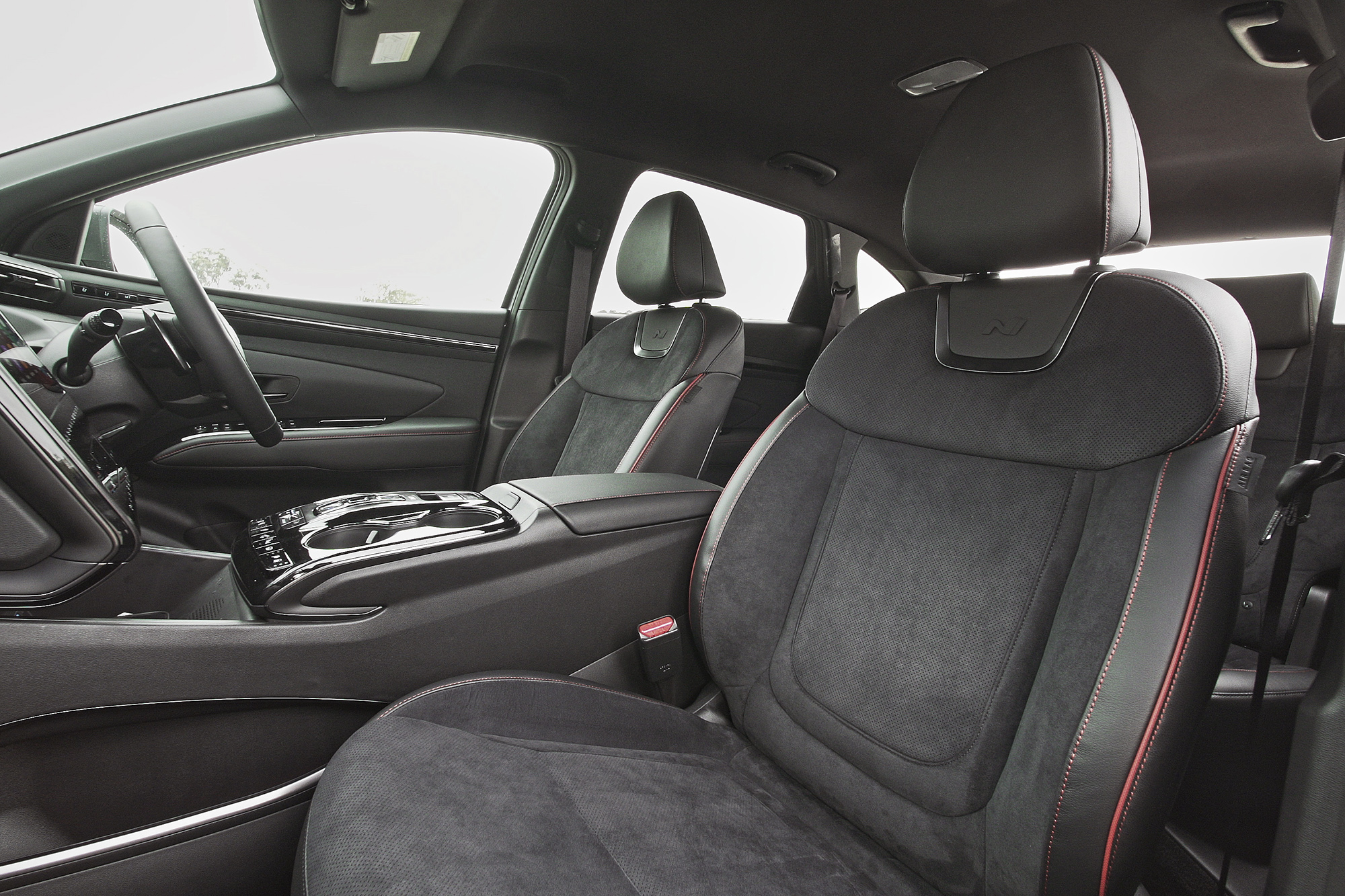
At the tail end, a deeper roof spoiler brings a more aerodynamic appearance, along with an aluminium-effect lower diffuser that houses a twin exhaust tailpipe.
The overall effect is a more aggressive-looking Tucson and a purposeful stance which we can’t wait to see alongside the rest of the range to highlight the full effect.
The interior N Line treatment is arguably even more effective and creates a bigger impact with less. A black roof lining instantly infuses the cabin with a cozy and classy ambience – a simple trick that many manufacturers seem to frequently forget.
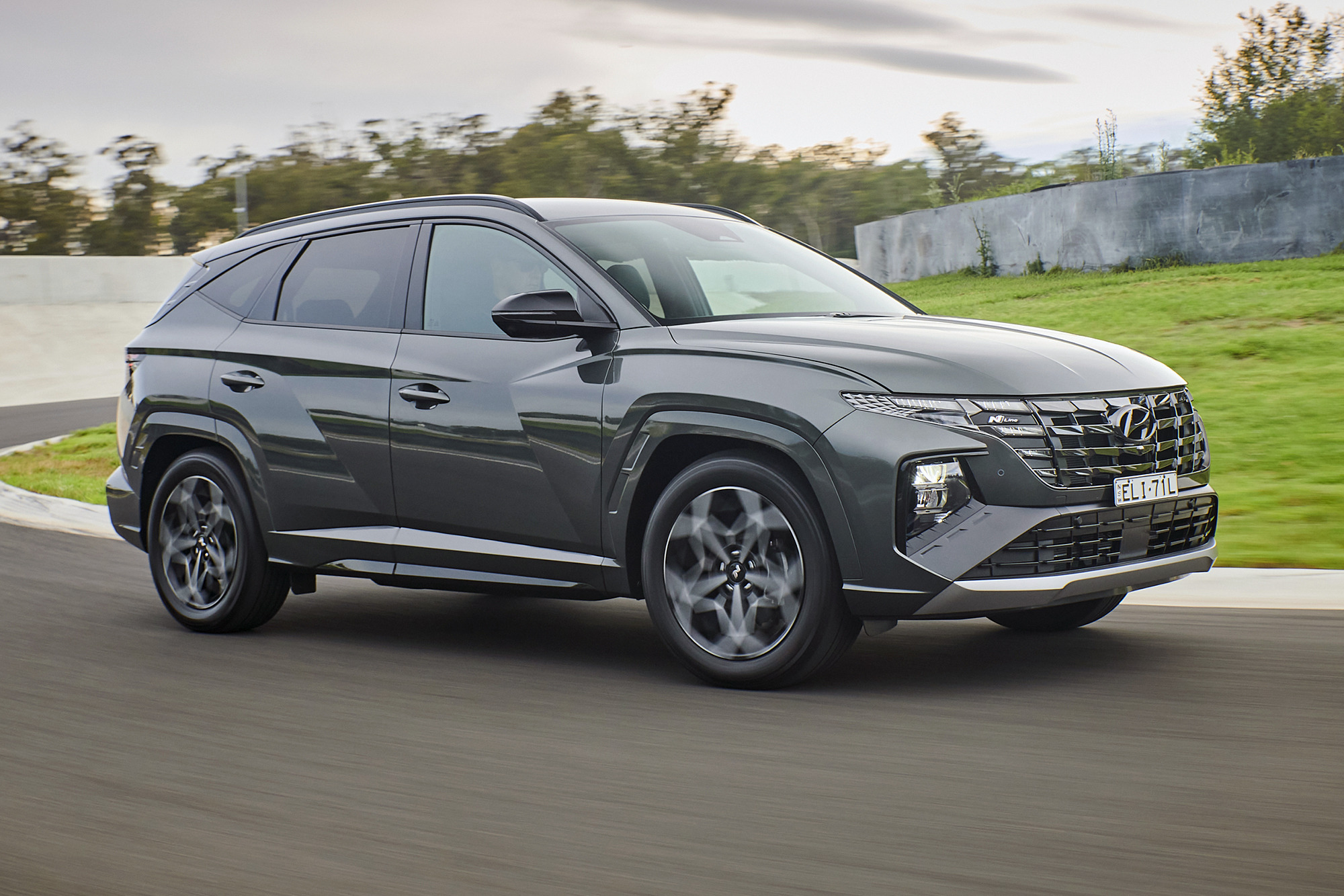
It pairs beautifully with a combination of black suede and leather upholstery, highlighted by red stitching and piping just about everywhere possible. There’s even a smart red flash on the pleasant dashboard fabric covering.
The seats manage to look and feel sporty without compromising comfort and the same goes for the leather sports steering wheel that has yet more red stitching.
The only thing that can tear your attention away from the lovely interior detailing is the array of digital displays that will accompany all top-spec Tucsons, including a 10.3-inch central touchscreen, complemented by a fully-digital driver’s instrument cluster.
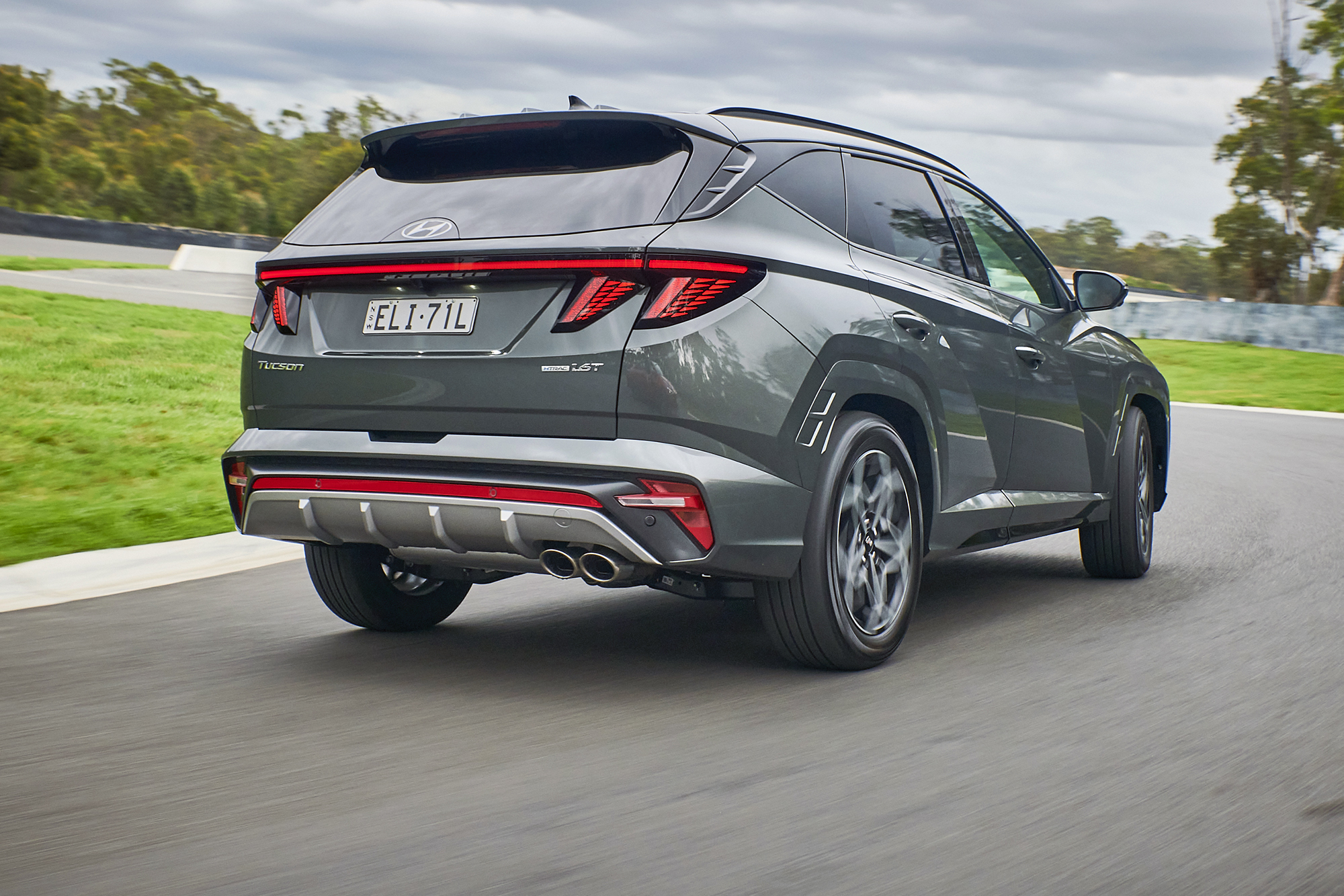
Neither are overly imposing, thanks to clever positioning that tucks them into the dashboard, preserving the clean flowing interior lines without obscuring them. Functional and impressive without being ostentatious.
The N Line embellishments effectively impart a sportier persona to the Tucson and, looking at the result, it might be hard to remember that there is no added tangible performance benefit but, happily, even in standard trim, the NX4 Tucson has a very likeable manner.
But that statement comes with a massive caveat and disclaimer. Firstly, the version on offer for a first spin is a pre-production car which means it doesn’t have the chassis tune that locally sold versions will have specifically to suit Australian roads.

It also rides on a Nexen tyre that may or may not be standard fitment when it arrives and, because it wasn’t road registered, our short time with the car was on the silky smooth surface of a racetrack – which can hide all manner of chassis traits that would quickly manifest on less perfect roads.
Nonetheless, the early signs are very good. Not least because our test car was fitted with the 1.6-litre turbo four-cylinder engine option, paired with all-wheel drive and seven-speed dual-clutch automatic transmission.
This combination is the same union found under the bonnet of both the Kona N Line and i30 N Line, although not quite wicked up to the full 150kW that the latter receives.
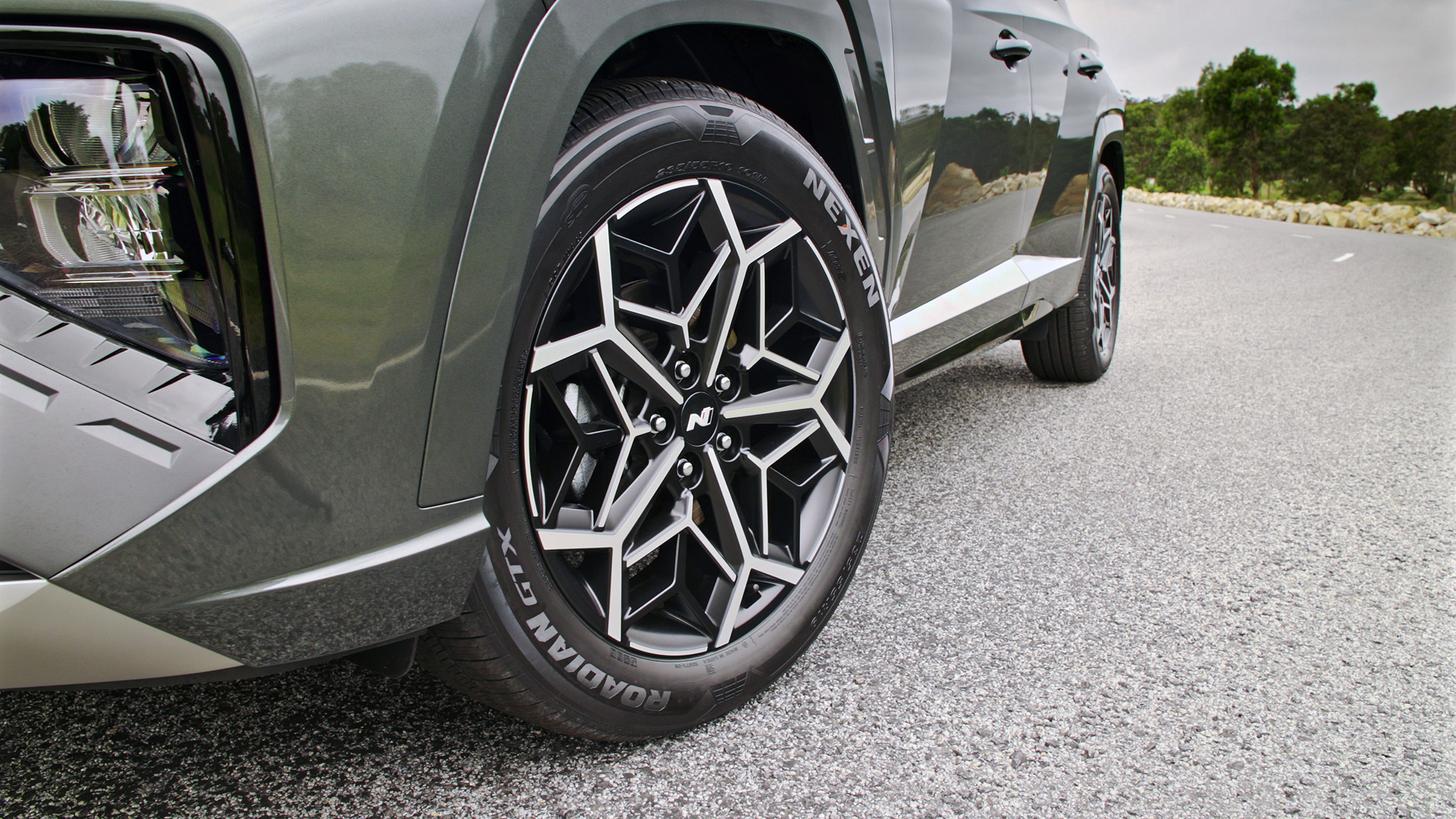
Despite the Tucson’s bigger build, this powertrain offers decent acceleration, enhanced by fast and eager cog-swaps from the DCT auto, and there’s a pleasing urgency to the way the Tucson makes progress when given a whip.
The chassis and handling appears to have evolved in the right direction too, compared with the previous model, with an even more obedient turn in, smooth steering and reassuring road-holding.
There’s a touch more body-roll that expected, but we wouldn’t be surprised to see some of that dialed out by Hyundai’s deft local development team.
With only a few laps to enjoy the fresh Tucson dressed up in its new shorts and runners, it’s fair to say a more performance-enhanced N Line version won’t be missed by many. In the 1.6-litre version at least, dynamics are fun and involving, while the general attitude is manageable and easy to chuck about.
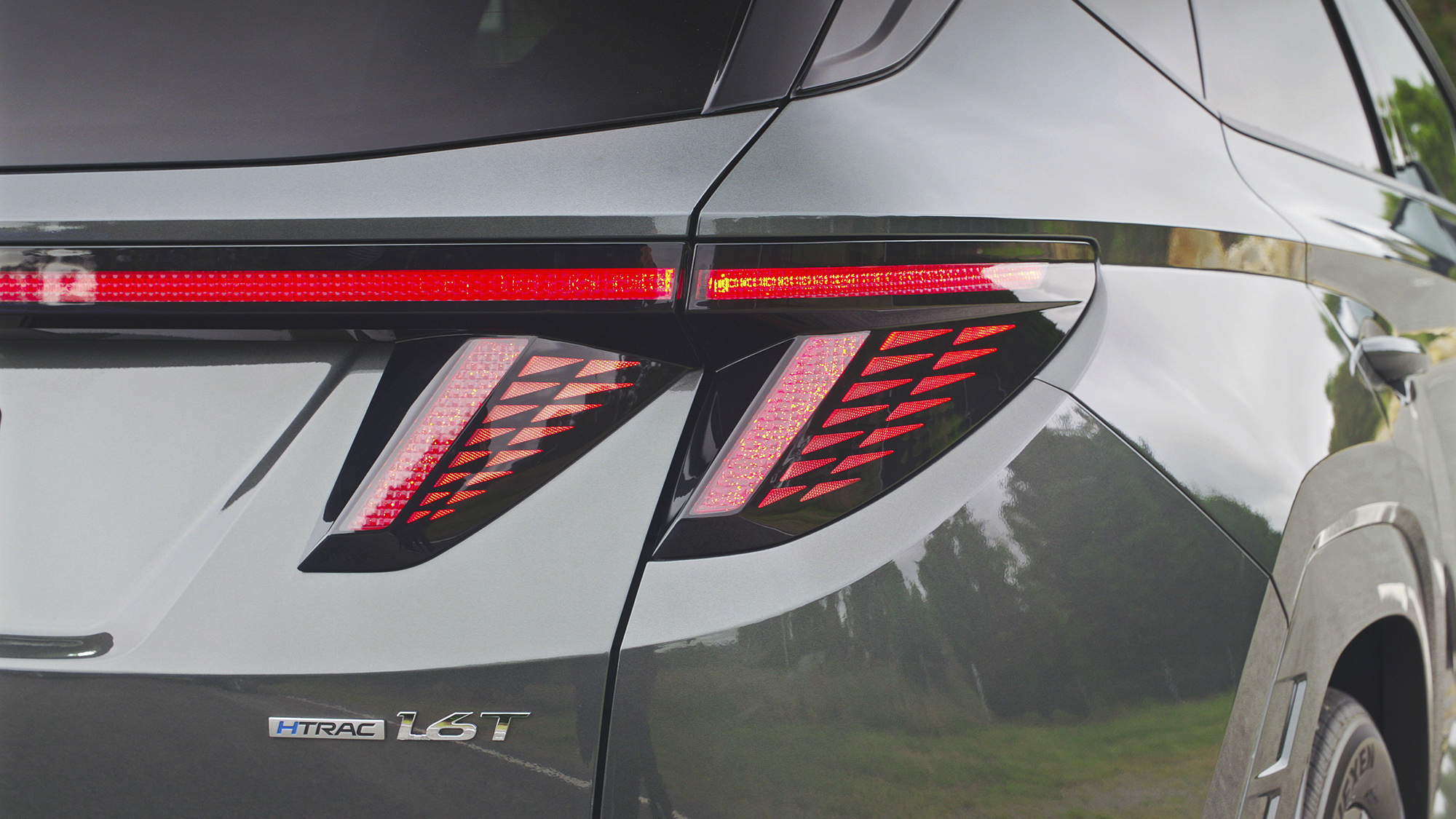
With this 150kW output, the combination of the excellent 1.6-litre engine and snappy DCT is a better pairing than optioning up to the more asthmatic 2.0-litre Tucson with the N Line package. The 1.6 T-GDi powerplant is the best-performing unit of the two, and the most logical match if you’re after the most N-ish Tucson.
Even if you do object to the omission of a properly warmed-up N Line option in the launch line-up, you may not have to remain disgruntled for long: ‘N-lite’ models like the Tucson N Line lay the foundations for more pure-bred N machinery, heralding more exciting Hyundais across the board.
And, as the i30 has demonstrated, that’s something well worth getting excited about.
